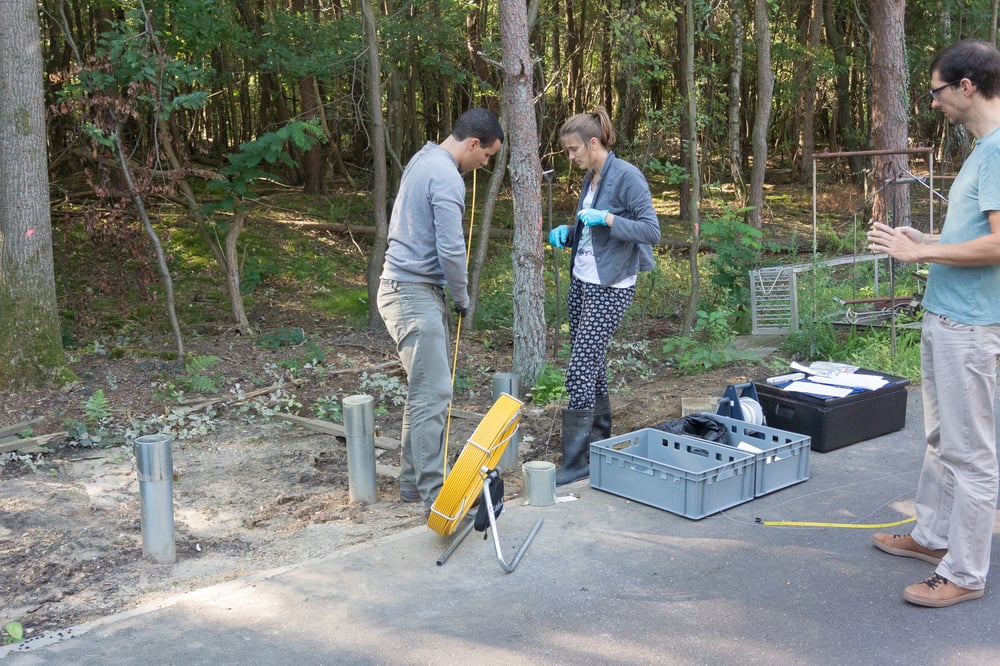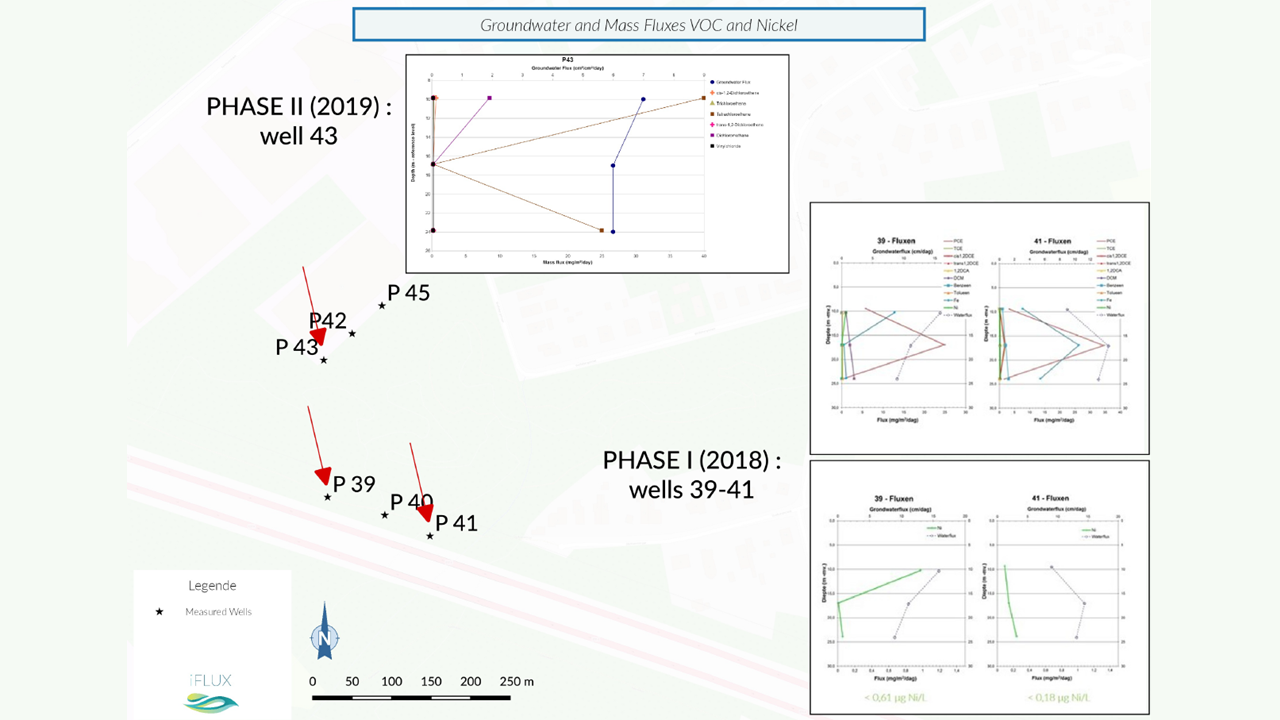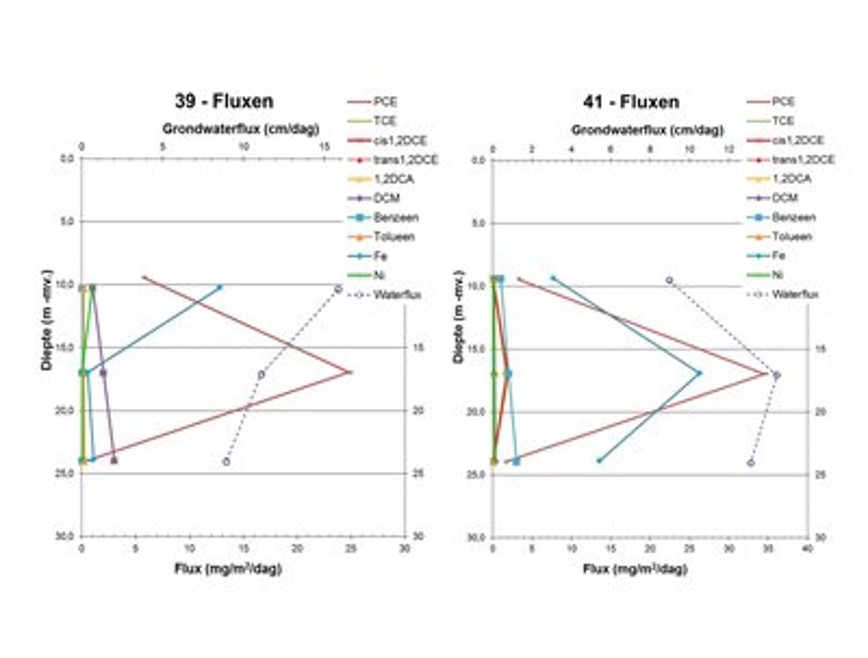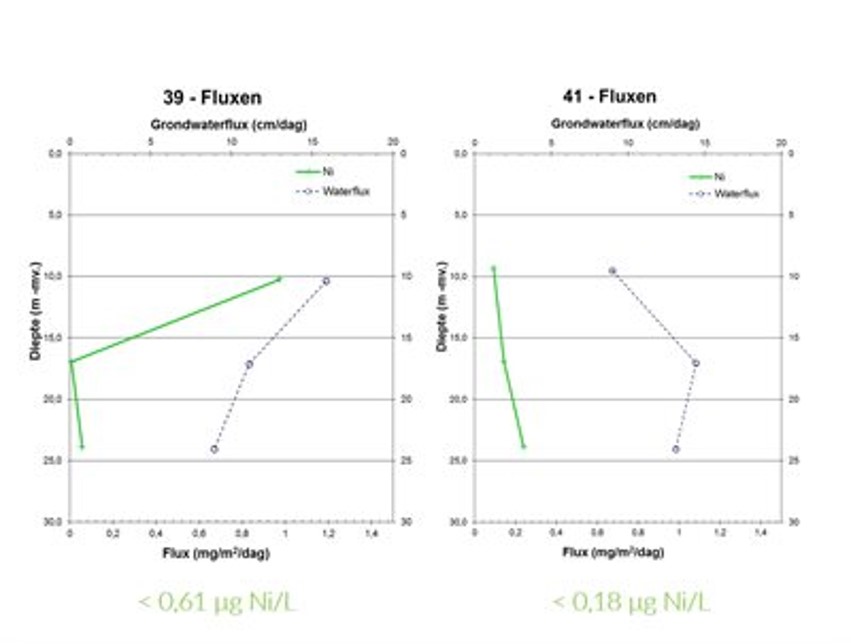Case Study
Nickel flux validates groundwater model, prompting risk-based management

iFLUX Sampler
Nickel & CVOC's
metal treatment
antea group
Belgium
Our value
Residual source strength determination
Successful groundwater model calibration
Accepted Risk-Based Management approach
Due to former surface treatment activities of metals, the subsoil was polluted. The contamination consists of Nickel and CVOC’s from just beneath the concrete slab to 4m-bgl. The unsaturated source zone has been removed. No DNAPL seemed to be present in the saturated zone, but also no natural attenuation of the CVOC’s seemed to happen.
Sampling
We used mass fluxes to determine the source and plume strengths. A groundwater and contaminant transport model had been built by Antea and was further calibrated by the iFLUX mass flux results.
- Installation of 2 control planes, one in the source and one in the plume zone
- Every control plane consisted of 3 to 4 clusters of respectively 3 monitoring wells at 3 different depths
- A total of 44 iFLUX cartridges have been exposed
- Exposure time: 10 weeks

"Flux measurements allow you to determine the residual source strength and optimize the remediation strategy accordingly"
Challenges
How to assess and control groundwater migration risk:
- Evolution of contaminated groundwater plume?
- Migration or contaminant spreading?
- Verify groundwater model
- Risk-based management approach feasible?
The Solutions
iFLUX provides insight in dynamic and complex process:
- Assessment of source strength evolution over time
- Measuring movement of contaminants
- Look for preferential pathways related to heterogeneous soil permeability
- Verify possibility of focused mitigation measure based on underground behavior of Nickel and CVOC's separately.

After the first iteration a stable Nickel plume was confirmed. Most measured values were less than 0,5 mg/m²/day, which was a factor of 30 lower than the water flux expressed in cm/d at corresponding depths. Because of this, further active remediation of residual Nickel contamination was no longer deemed necessary by the supervising authority. A risk- based management approach was approved for coming years, which could probably avoid an extensive and expensive remediation process.
Subsequently, in the second and third iteration, only CVOC’s were measured. Before the flux measurements, unexpected results were found in the concentration measurements (in P43). The stratification of the pollution was different than expected.
By adding flux measurements, it was possible to interpret these results with more certainty and to adapt the contaminant transport model accordingly. The groundwater flow model has been calibrated according to these results.
Conclusions:- Relevant CVOC's mass present and migrating down gradient. Nickel mass is stable.
- Preferential pathways related to heterogeneous soil permeability found.
- Focused mitigation measures possible. Remedial monitoring and design needs to be differentiated for stable Nickel and migrating CVOC's

Figure: Measured mass fluxes (mg/m²/day) at different depths (in meters)

Figure: Measured groundwater flux (cm/day per depth) and nickel (mg/m²/day) at different depths.
See how iFLUX will help your project.
Get in touch to review how the iFLUX Sampler will support your project.